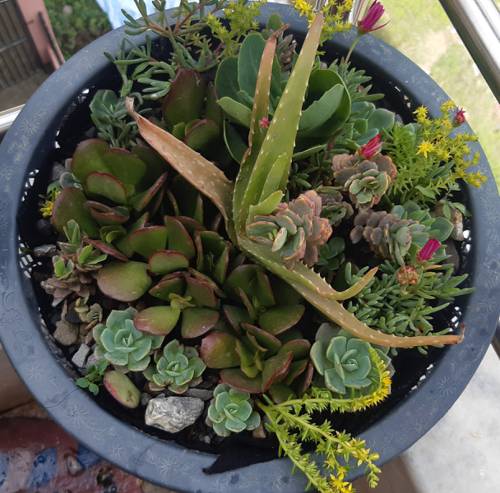
FAQ About Indoor Plant Phytoremediation Techniques

What is indoor plant phytoremediation?
Indoor plant phytoremediation is the use of houseplants to remove, degrade, or stabilize pollutants and contaminants from the indoor environment. This process leverages specific capabilities of plants to absorb, translocate, and sometimes transform various contaminants present in air and water, improving indoor air quality and creating a healthier living space.

Which pollutants can indoor plants remove from the air?
Indoor plants can remove a variety of pollutants such as volatile organic compounds (VOCs) including benzene, formaldehyde, trichloroethylene, xylene, and ammonia. These compounds are commonly emitted from household items such as carpets, paints, and cleaning products.

How do indoor plants improve air quality through phytoremediation?
Indoor plants improve air quality by absorbing pollutants through their leaves and roots. Through processes such as photosynthesis and transpiration, plants can uptake VOCs and other harmful chemicals. The roots and associated soil bacteria can then transform these chemicals into less harmful substances, effectively purifying the indoor air.

What plants are best known for their phytoremediation capabilities indoors?
Some of the best indoor plants for phytoremediation include the peace lily (Spathiphyllum), spider plant (Chlorophytum comosum), snake plant (Sansevieria trifasciata), pothos (Epipremnum aureum), and bamboo palm (Chamaedorea seifrizii). These plants are particularly effective at filtering various VOCs and other pollutants.

Can indoor phytoremediation help with soil contaminants?
While indoor phytoremediation is primarily aimed at improving air quality, certain plants can also uptake and stabilize contaminants from the soil in potted environments. This includes heavy metals and salts that may occur in poor quality potting mixes or be introduced through improper watering.

How long does it take for indoor plants to start showing phytoremediation benefits?
The effectiveness of phytoremediation can vary based on the type and size of the plant, along with the level of pollutants. However, some improvements in air quality can be noticed in as little as one to two weeks with the presence of appropriate plants.

Do indoor plants need special care to perform phytoremediation?
Indoor plants used for phytoremediation generally require the same care as regular houseplants, such as appropriate lighting, watering, and nutrient management. However, ensuring clean soil and avoiding the accumulation of pollutants in the growing medium are additional considerations to maintain their effectiveness.

Are some plants more effective at phytoremediation than others?
Yes, some plants are more efficient at removing specific pollutants than others. Research has shown that plants such as the the purple waffle plant (Hemigraphis alternata), Boston fern (Nephrolepis exaltata), and English ivy (Hedera helix) can remove substantial amounts of toxins and thus are considered more effective for certain contaminants.

Can indoor phytoremediation be used to improve water quality?
Although more commonly associated with air purification, certain types of indoor phytoremediation can indeed improve water quality by absorbing contaminants present in water used for watering the plants or within aquaponic systems.

What are the limitations of indoor plant phytoremediation?
While indoor plant phytoremediation offers many benefits, it has limitations such as its dependency on plant type, pollutant concentration levels, and environmental conditions. The extent of purification might be limited, and it may not completely eliminate all indoor pollutants, particularly in heavily contaminated environments.

How can I integrate phytoremediation techniques in my home effectively?
To integrate phytoremediation, choose plants known for their purification capacities and place them in areas with higher concentrations of pollutants, such as living rooms or home offices. Regular maintenance, such as watering and cleaning leaves, also ensures optimal performance of the plants.

Is there scientific research supporting indoor plant phytoremediation?
Yes, there is substantial scientific research supporting the effectiveness of indoor plant phytoremediation. Numerous studies, including those by NASA, have documented how specific plants can remove toxins from indoor air, establishing the value of plants in improving indoor environments.

How does phytoremediation compare to other air purification techniques?
Phytoremediation is environmentally friendly and cost-effective compared to mechanical methods like air filters, as it requires no power and contributes to indoor aesthetic. However, it may be less rapid in removing high levels of pollutants compared to some mechanical systems and is therefore often used complementarily.

Is it possible to use phytoremediation in all indoor environments?
While phytoremediation can be used in most indoor environments, factors such as space limitations and lighting conditions can affect plant growth and effectiveness in pollutant removal. Ensuring adequate sunlight and air circulation is key to maximizing the benefits of indoor plant phytoremediation.

What are the costs associated with implementing indoor phytoremediation?
The costs can vary depending on the types and number of plants selected. Generally, it involves the initial purchase of plants and containers, with ongoing costs being relatively low, consisting mainly of maintenance aspects like watering and fertilization.

Can indoor plants help with biological pollutants?
While indoor plants can help to some extent with biological pollutants by increasing humidity and reducing other pollutants as part of a healthy indoor ecosystem, they are generally less effective at directly controlling biological contaminants like bacteria and viruses.

Does using indoor plants for phytoremediation have any negative effects?
There are generally few negatives associated with using indoor plants for phytoremediation, although over-watering or the use of contaminated soils can lead to mold growth or an increase in allergens. Regular plant care and maintenance can mitigate most potential issues.

What role do soil microbes play in phytoremediation?
Soil microbes play a critical role in the phytoremediation process by aiding in the breakdown and transformation of pollutants that plants absorb. The symbiotic relationship between plants and microbes enhances the efficiency of contaminant removal from the environment.

Can indoor phytoremediation replace mechanical air purifiers?
While indoor phytoremediation can be a natural and cost-effective supplement to improving air quality, it typically cannot fully replace mechanical air purifiers, especially in environments with very high levels of pollution. Both methods can be used together for optimal results.

Are there specific conditions under which indoor plant phytoremediation is most effective?
Indoor plant phytoremediation is most effective in conditions where there is adequate light for photosynthesis, balanced humidity, and clean water for watering. Ensuring these conditions can enhance plants' abilities to absorb and break down environmental pollutants.
